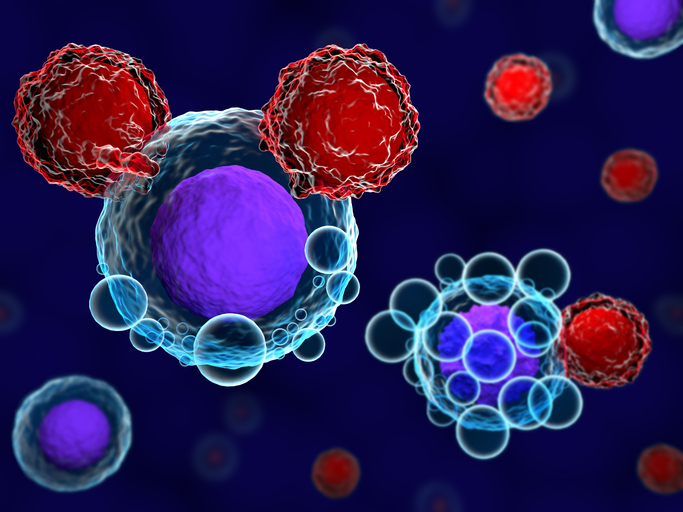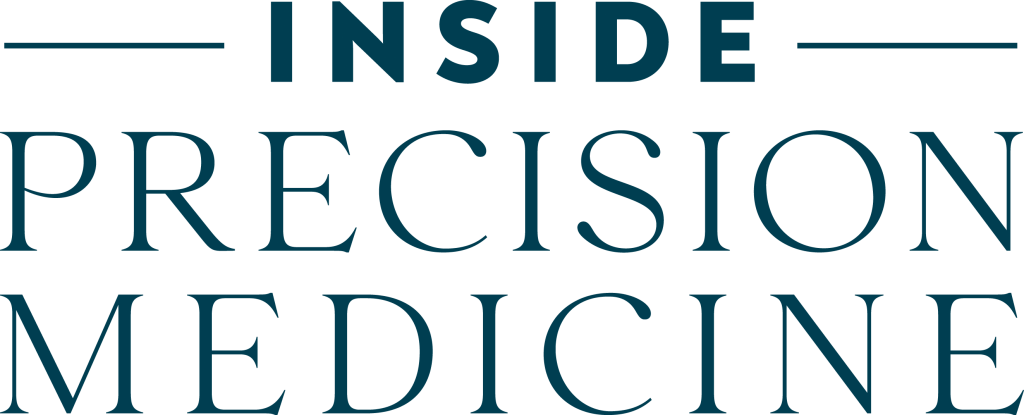
Before dosing the first autoimmune disease patient with chimeric antigen receptor T cell (CAR T) therapy, Georg Schett, MD, asked his team at Friedrich-Alexander-Universität Erlangen-Nürnberg (FAU), “Why don’t we use CAR T cells to deeply deplete the B-cells?” Schett believed that CAR T cells—living medicines that can proliferate and kill cells anywhere in the body—could cure autoimmune diseases. But the “right” patient was missing.

Department Head
Friedrich-Alexander-Universität Erlangen
When Vu-Thi Thu-Thao, a 20-year-old with severe lupus who was not responding to treatment, entered in 2020, Schett said, “Now is the time!” They debated whether to use CAR T or daratumumab, an off-label monoclonal antibody for multiple myeloma that had shown promise in autoimmune patients. He and his colleague Andreas Mackensen, MD, carefully considered the balance between risks and benefits of CAR T therapy in such non-oncologic diseases. “Since the patient’s prognosis was so poor and risks of therapy can be managed, we concluded that [the] benefit outweighs the risks,” Schett said. “There could be many reasons why it wouldn’t work, which we communicated to the patient before we started. … But we told her, ‘If you’re lucky, you might have a single infusion and your autoimmune problem could be solved.’” In six weeks, Schett and Mackensen produced CAR T cells, infused them in the patient, and saw no toxicity and that her lupus had resolved. After almost four years, Vu-Thi Thu-Thao is still disease-free and has never taken any steroids or immunosuppressants.
In the four years since this milestone—the treatment of autoimmune disease patients with CAR Ts—big pharma divisions and startups with clinical trial programs have emerged in full force. This trend makes sense. More than 80 autoimmune disorders (e.g., asthma, rheumatoid arthritis [RA], multiple sclerosis) affect 5–10% of the industrial world’s population, which is potentially over 1 billion patients. All diseases with B-cell activation, such as autoantibody production, hypergammaglobulinemia, or B-cell presence in lesions, could be targets. For instance, immunoglobulin G4 (IgG4)-related disease has a strong plasma cell component but no autoantibodies. The treatment is also, for the most part, organ-independent.
It dabbles with the “c” word—cure—a term that many are afraid to throw around. But not Schett, who said, “I think when we have reached next year, then we would more openly speak about ‘cure.’ The fact that you can, with a single-infusion approach, stop treatment and drive a long-standing drug for remission is completely new. We, as physicians working in autoimmunity, are used to the concept that we have to suppress the disease forever. This conceptual change that a cure might be possible needs to get into our heads as it is new.”
Oncology vs. autoimmune disease
Tim Campbell, MD, PhD, vice president of early clinical development in hematology and cell therapy at Bristol Myers Squibb (BMS), does not need much convincing about the potential of CAR Ts, having played a key role in developing Abecma, an autologous B-cell maturation antigen-directed CAR T therapy for adults with relapsed or refractory multiple myeloma. According to Campbell, who is expanding the use of CAR Ts from cancer to autoimmune diseases with the cell therapy BMS-986353, also known as CD19 NEX-T, several patient factors and clinical trial observations need to be better understood before forging ahead.

Vice President
Bristol Myers Squibb (BMS)
“Oncology patients come in pre-treated with a lot of heavy chemotherapy and other things that the autoimmune patients just never see during their treatment course,” said Campbell. “Even when they’re coming in at later stages of treatment on the autoimmune side, they’re still quite a different population than your very late-line oncology patients. And there is something about oncology; the persistence of the CAR Ts and the need for consistent target cell pressure tends to be greater in oncology patients. … But in the autoimmune patients, they seem to have this more rapid recovery of their B-cell compartment, which I think is a good thing for the overall profile.”
Despite these differences, the approaches taken by Campbell and BMS for CAR Ts for both cancer and autoimmune diseases are almost identical. CD19 NEX-T is built using the same construct as Breyanzi, which was approved last year for treating patients with relapsed or refractory chronic lymphocytic leukemia or small lymphocytic lymphoma. However, CD19 NEX-T has a shorter manufacturing process and needs minimal cell expansion. Of the NEX-T manufacturing process, Campbell said, “We think that this minimally expanded process pairs well with non-oncology patients, meaning that these patients generally come in with healthier T cells at baseline and so, they can really manufacture quite good drug products from this process.”

So far, the CD19 NEX-T approach seems to be working in autoimmune diseases as well as its FDA-approved twin does in oncology. Schett presented safety and tolerability data and signs of efficacy for CD19 NEX-T at the American College of Rheumatology conference in mid-November 2024, focusing on the treatment of the first seven out of 11 patients with systemic lupus erythematosus and a poor prognosis.
All of these patients reportedly demonstrated decreased disease activity and autoantibodies after receiving a single injection of CD19 NEX-T. During 11 months of follow-up, they showed no signs of disease recurrence and had stabilized without immunosuppression. Re-emerging B-cells were predominantly naïve and their resurgence was not correlated with lupus exacerbation. Research into the optimal safety and efficacy profiles of CD19 NEX-T at the recommended dose for Phase II trials is currently underway.
Selectively targeting B-cells
Aimee Payne, MD, PhD, who serves as chair of the department of dermatology at the Vagelos College of Physicians and Surgeons, Columbia University, and as the dermatologist-in-chief at the Columbia University Irving Medical Center, NewYork-Presbyterian, aspires to make the treatment of autoimmune diseases with CAR Ts more precise. In doing so, she hopes to avoid risking the permanent loss of B-cells as CAR Ts for cancer therapy might do.

Department Chair
Columbia University
Payne’s stance stems from her work as a physician-scientist working on a skin disease called pemphigus vulgaris, which causes painful, easy-to-burst blisters on the skin and mucous membranes (mouth, nose, throat, eyes, and genitals). Before being identified as an autoimmune disease, pemphigus was considered uniformly fatal. Pemphigus patients often arrived at hospitals with blisters on their skin and mucous membranes that prevented them from eating. Sepsis, malnutrition, and dehydration often killed patients with pemphigus in intensive care or burn units.
During her doctoral studies, Payne decided to specialize in pemphigus because it was so well-defined. Prior research had identified desmogleins—a protein family found on the surface of keratinocytes that helps maintain tissue integrity and cell-to-cell communication—as target antigens in pemphigus. While thinking about how to develop a precision therapy targeting autoimmune B-cells, specifically anti-desmoglein 3 (DSG3) B-cells, to treat pemphigus, Payne’s team noticed the effectiveness of CAR Ts in eliminating B-cells. At the same time, Carl June, MD, and his team at the University of Pennsylvania just across the street were making headway in clinically testing CAR Ts to treat B-cell leukemia and lymphoma.
“When you think about the B-cell that you’re trying to target, it not only has CD19 on its cell surface, which is what all of the CAR T programs in autoimmunity are targeting right now, but it also has a B-cell receptor on its surface,” said Payne. “That B-cell receptor is the antibody that the B-cell is going to secrete once it matures into a plasma cell. So it becomes the perfect target, because by definition, every pemphigus B-cell has an anti-DSG3 B-cell receptor on its surface, and healthy B-cells don’t have that.”
Payne and colleagues then took the DSG3 autoantigen and threw it on CAR T cells with the hope of achieving targeted antigen-specific B-cell depletion, which could become a precision immunotherapy that would lead to lifelong remission of autoimmune diseases. That idea led to the spin-off of a company called Cabaletta Bio, which Payne co-founded with Steven Nichtberger, MD, and Michael Milone, MD, PhD. Milone co-invented tisagenlecleucel (Kymriah), the first CAR T therapy approved by the FDA. Cabaletta is developing a chimeric autoantibody receptor T (CAAR T) cell approach to eliminate only disease-causing B-cells. The company is now testing their CAAR T technology in clinical trials for patients with specific forms of pemphigus vulgaris and myasthenia gravis.
Regulatory T cells (Tregs)

Chief Scientific Officer
Sonoma Biotherapeutics
Using effector T cells to eliminate a target cell type is not the only CAR approach being taken. Joseph R. Arron, MD, PhD, chief scientific officer at Sonoma Biotherapeutics, believes that directly targeting cells in dysfunctional or damaged tissue that are necessary for the autoimmune response can restore tissue integrity and quiet the inflammatory response.
Arron and his team have focused on regulatory T cells (Tregs), which can recognize antigens like effector T cells but act in many ways on different cells to promote immune homeostasis, stop inappropriate inflammation, and heal tissue. There are a couple of other things that Tregs can purportedly do depending on the context, such as changing the metabolic environment to minimize inflammation and secreting tissue repair-promoting factors.
“Instead of just saying we are going to nuke this population of cells with effector T cells, we are putting in regulatory cells that have pleiotropic effects on many things,” said Arron. “One important consideration in the non-oncology space is that CAR T effectors are not innocuous; there is a significant inflammatory response, which is good for eliminating tumors but can cause severe adverse side effects like cytokine release storm and immune effector cell-associated neurotoxicity syndrome (ICANS). But there’s no reason to believe that Treg therapy is going to contribute to those effects.”
Tolerability and safety issues arise when using effector CAR Ts, which require a conditioning regimen like chemotherapy. Arron does not think CAR Treg cell therapy will require these additional steps. That being said, Arron does not discount the potential for effector CAR T cells to target B-cells in autoimmune diseases, as B-cells produce pathogenic autoantibodies, activate T cells, and produce inflammatory cytokines. This means that B-cell elimination can have pleiotropic therapeutic effects. Still, the Venn diagram for the therapeutic potential of effector vs. regulatory CAR T cells in autoimmune diseases is unclear.
Sonoma’s first CAR Treg program, SBT-77-7101, for treating RA and hidradenitis suppurativa, uses a CAR based on an RA patient-derived antibody that specifically binds to proteins with citrullinated arginine residues. RA and other autoimmune inflammatory diseases are characterized by the presence of citrullinated proteins, a post-translational modification wherein arginines are deimidated to citrulline, a nonessential amino acid. Activated neutrophils frequently “spew out their guts” to release citrullinated proteins, which promotes inflammation. RA patients have been shown to generate an autoimmune response against citrullinated proteins. Sonoma has initiated Phase I studies to evaluate the safety and proof-of-mechanism of SBT-77-7101 for RA and to test the safety and efficacy of SBT-77-7101 when given as a single dose to subjects with hidradenitis suppurativa. Sonoma also has several preclinical regulatory T-cell-based therapies for neuroinflammatory diseases and four others in a 50/50 partnership with Regeneron for inflammatory bowel disease and other indications.
Moving towards allogeneic approaches
Cokey Nguyen, PhD, president and CEO of Atara Biotherapeutics, believes that autologous CAR Ts suit oncology when treating around 10,000 patients, but that they cannot scale and are insufficient to help millions of autoimmune disease patients. “The cost of capital is probably $2–4 billion to be able to do those 10,000 autologous CAR Ts,” Nguyen told Inside Precision Medicine. “That’s what you’re seeing from the larger autologous companies, and there’s no way that you can efficiently scale to meet this large, unmet autoimmune need.”

President and CEO
Atara Biotherapeutics
Autoreactivity potential, logistical challenges, and exhaustion make autologous T cell creation and use from autoimmune patients difficult, according to Nguyen. CAR Ts are less effective when T cells are exhausted in oncology trials, so autologous treatments will likely be suboptimal. Managing autoimmune autoreactivity is even harder. “As a scientist, I couldn’t look at this and say that this is probably an approvable drug because when you have a lot of autoreactive T cells, the last thing you want to do is expand them and put them back in a patient activated,” said Nguyen. “What might happen is that when these things go pivotal and registrational, you’ll probably see not only a higher preponderance of ICANS and cytokine release syndrome, but you’ll probably see some autoreactivity.”
The solution Nguyen proposes is an allogeneic T cell platform—for both oncology and autoimmune treatments—based on the observation that most people naturally fight an Epstein-Barr virus (EBV) infection and retain accessible EBV-memory T cells that can be repurposed with a CAR that could fight other diseases. Based on this platform, Atara has two allogeneic CAR T programs: one with a CD19 (ATA3219) and another with a CD19/CD20 construct (ATA3431). Both therapies use the 1XX signaling domain as part of their second-generation CARs, designed to optimize expansion and reduce T cell exhaustion. Besides oncology, ATA3219 has a Phase I program for lupus nephritis and extrarenal systemic lupus erythematosus without lymphodepletion, and ATA3431 is anticipated to go through an IND submission in Q4 2025.
One key challenge for the allogeneic field will be defining a standard for allogeneic CAR T cells. Nguyen said Atara’s work on tabelecleucel, approved in Europe in 2022 as the world’s first allogeneic T-cell therapy, helped define the guidance for cell and gene therapies for comparability and critical quality attributes because allogeneic, by definition, comes from multiple humans. Nguyen said, “You have biological variability, and then you have to harmonize and calibrate that pool, go into your [CAR] process, and your end product has to fall within a pretty narrow range for these critical quality attributes. You have to be exceptionally robust in all of those criteria, especially for things like alloreactivity, where you have to prove so much that your drug is safe. We have to be as safe as biologics like Humira or Enbrel. I think it’s something that perhaps we don’t talk about.”
While a few patients have shown promising results, quality control standards, especially for “off-the-shelf” allogeneic approaches, must be met before these living medicines can significantly impact millions of people with painful and crippling autoimmune symptoms.
Jonathan D. Grinstein, PhD, North American editor for Inside Precision Medicine, investigates the most recent research and developments in a wide range of human healthcare topics and emerging trends, such as next-generation diagnostics, cell and gene therapy, genome engineering, and AI/ML for drug discovery for publications like Scientific American and Genetic Engineering and Biotechnology News (GEN). Jonathan earned his PhD in biomedical science from the University of California, San Diego, and a BA in neural science from New York University.















